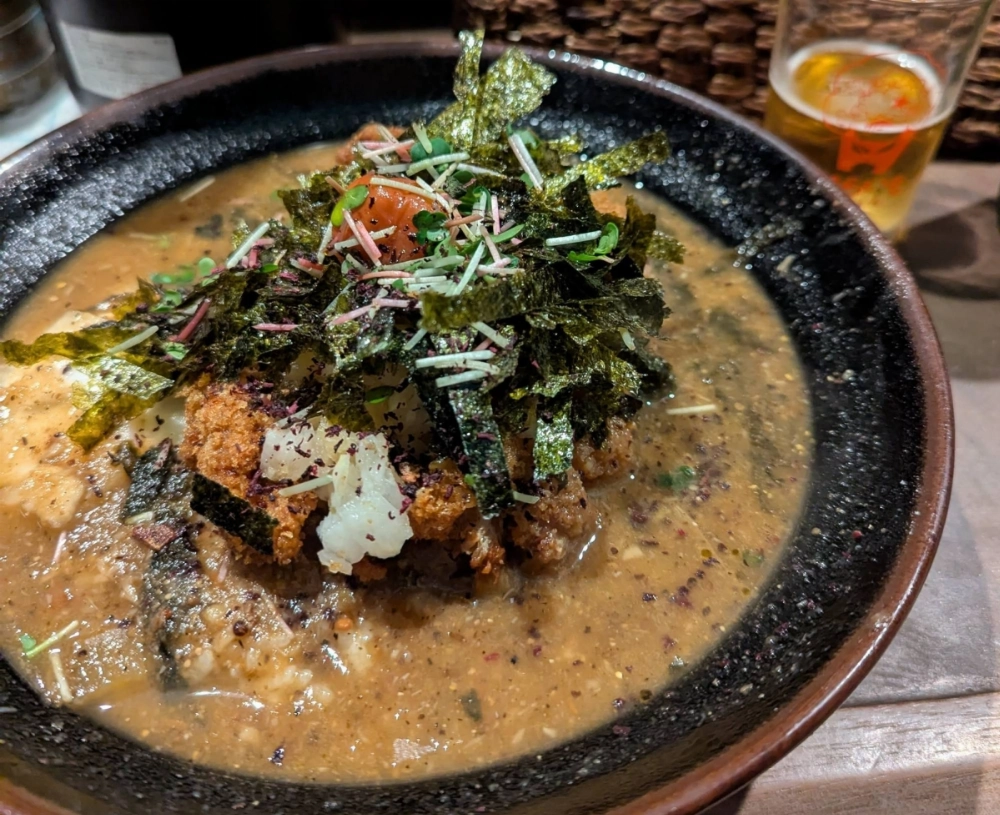A proud Osakan tradition, spice curry in Japan is often known as magari (rental room) curry, a term that refers to its origins under the hands of pop-up chefs who rented temporary kitchens in bars and restaurants to dabble in the curry business.
Amateur vendors of magari curry have been liberating the dish from the limits of convention, with ingredients ranging from the exotic to the downright bizarre. One such practitioner, now celebrating his 10th year in operation, has pushed the practice one step further, infusing his food with a particularly odd and imaginative style in this not-so-quiet corner of Japan’s kitchen.
Within a nondescript office building near Higobashi Station, a wave of magenta light floods the second-floor entryway. Above a front door obstructed by an overflowing chest of cabbage and rice, a neon sign welcomes you in an odd union of hiragana and English: Haraiso Sparkle.


















With your current subscription plan you can comment on stories. However, before writing your first comment, please create a display name in the Profile section of your subscriber account page.